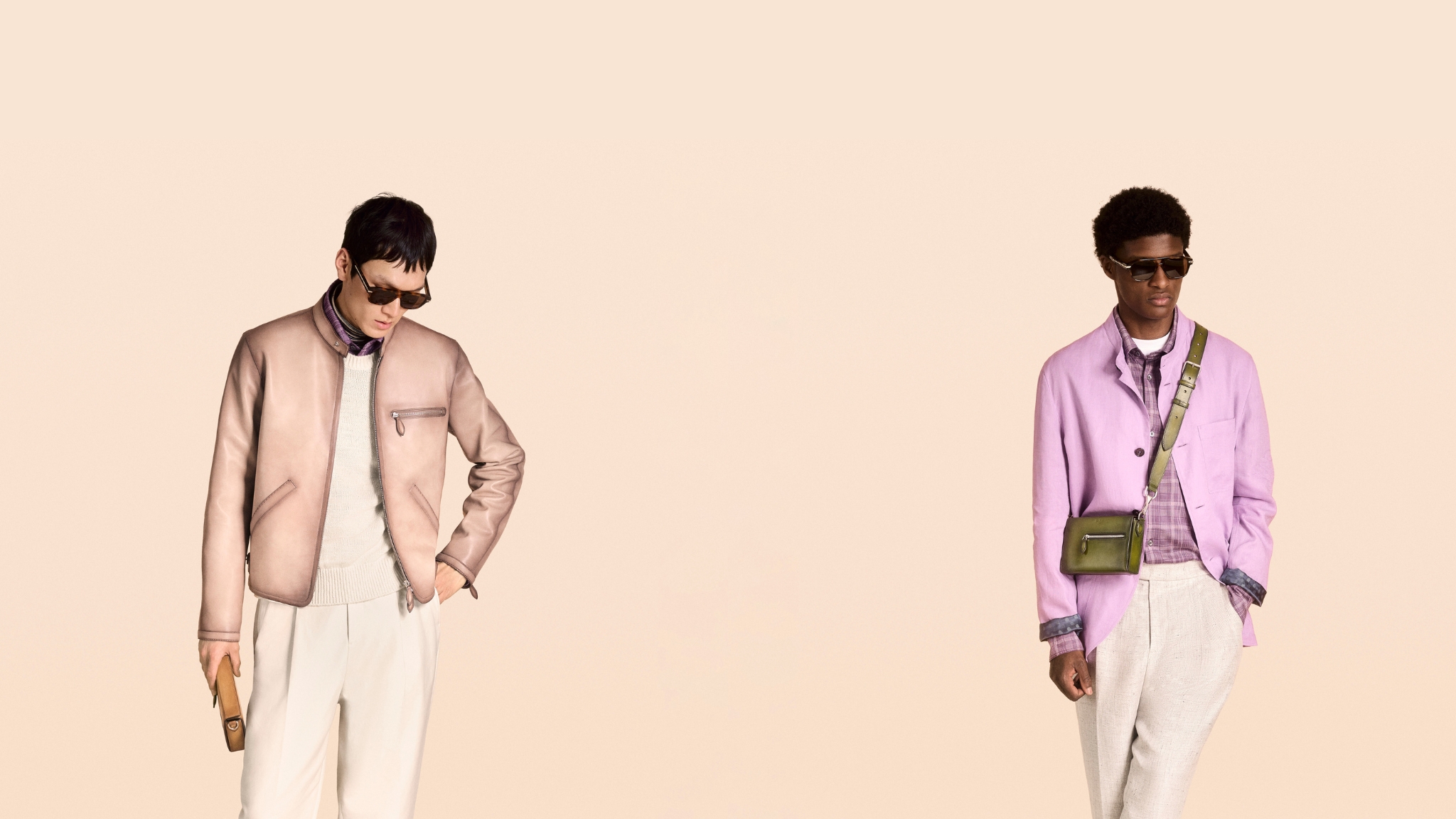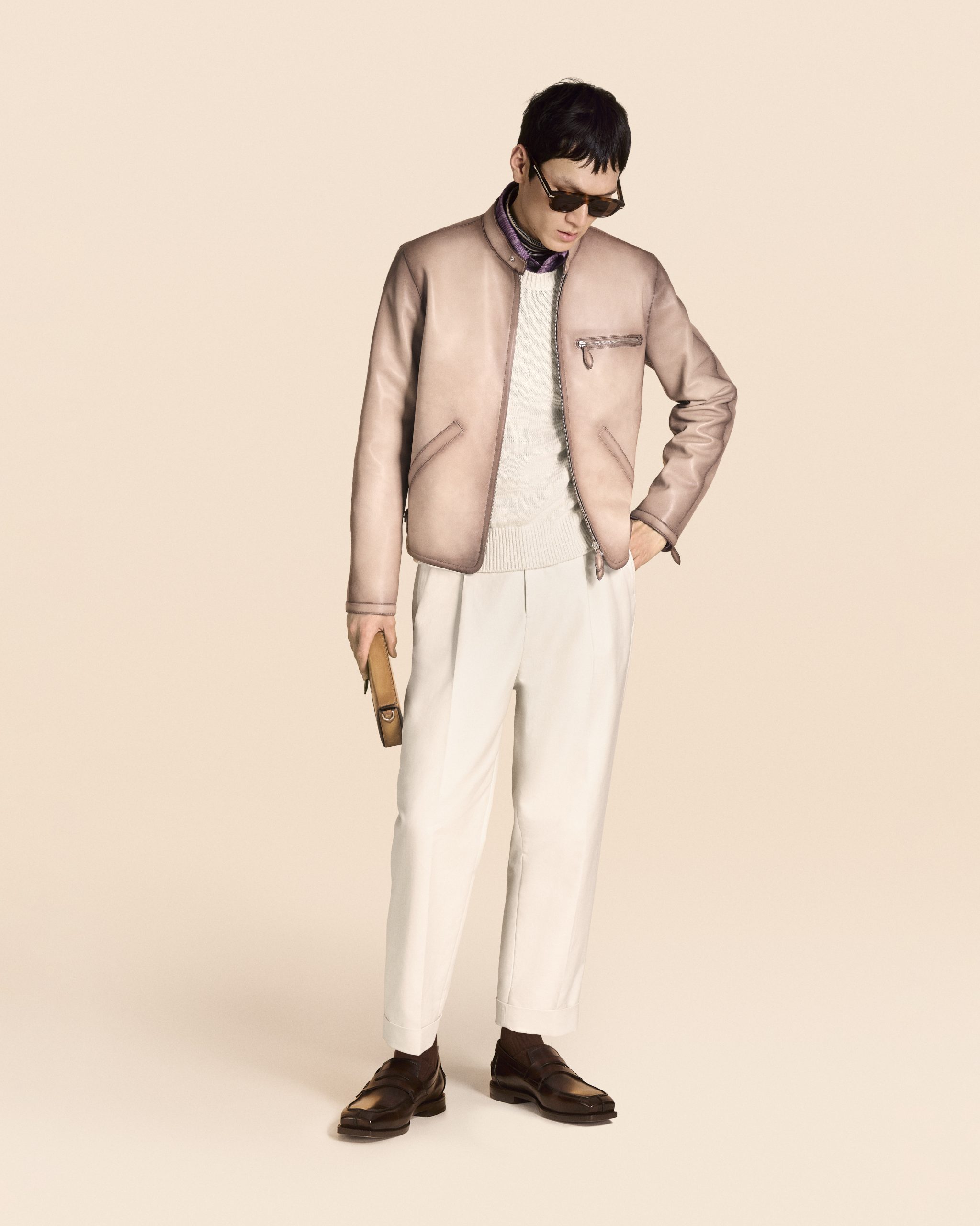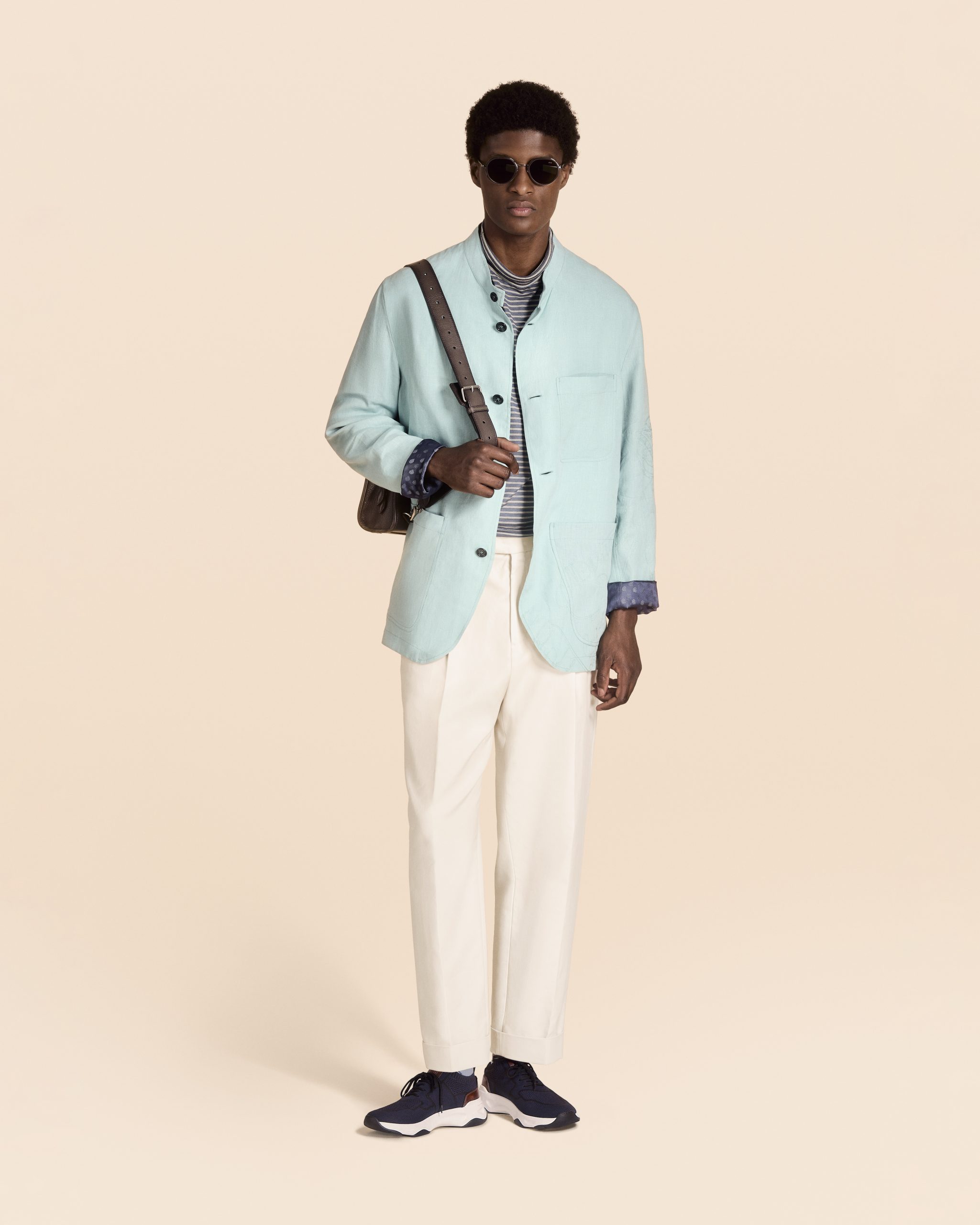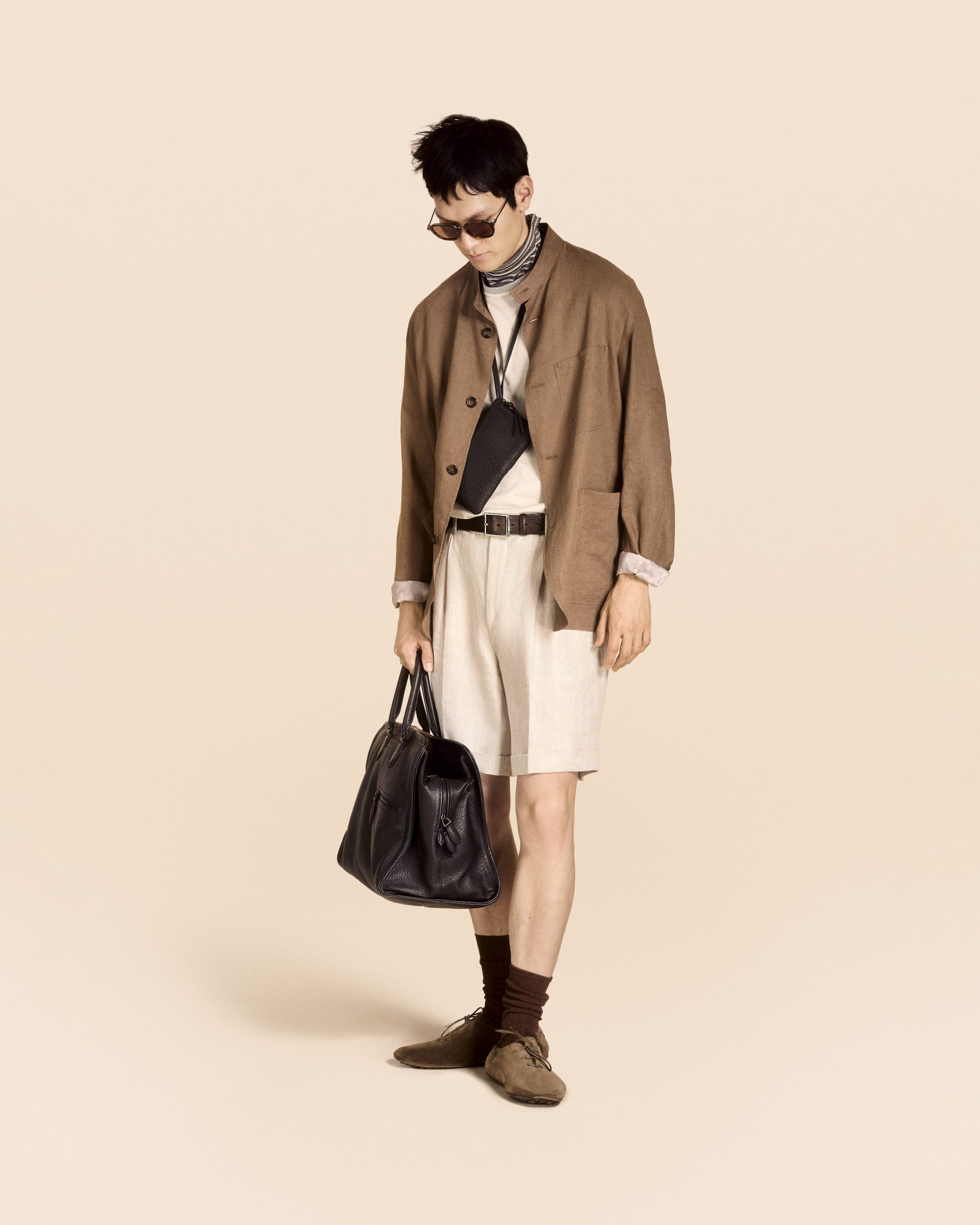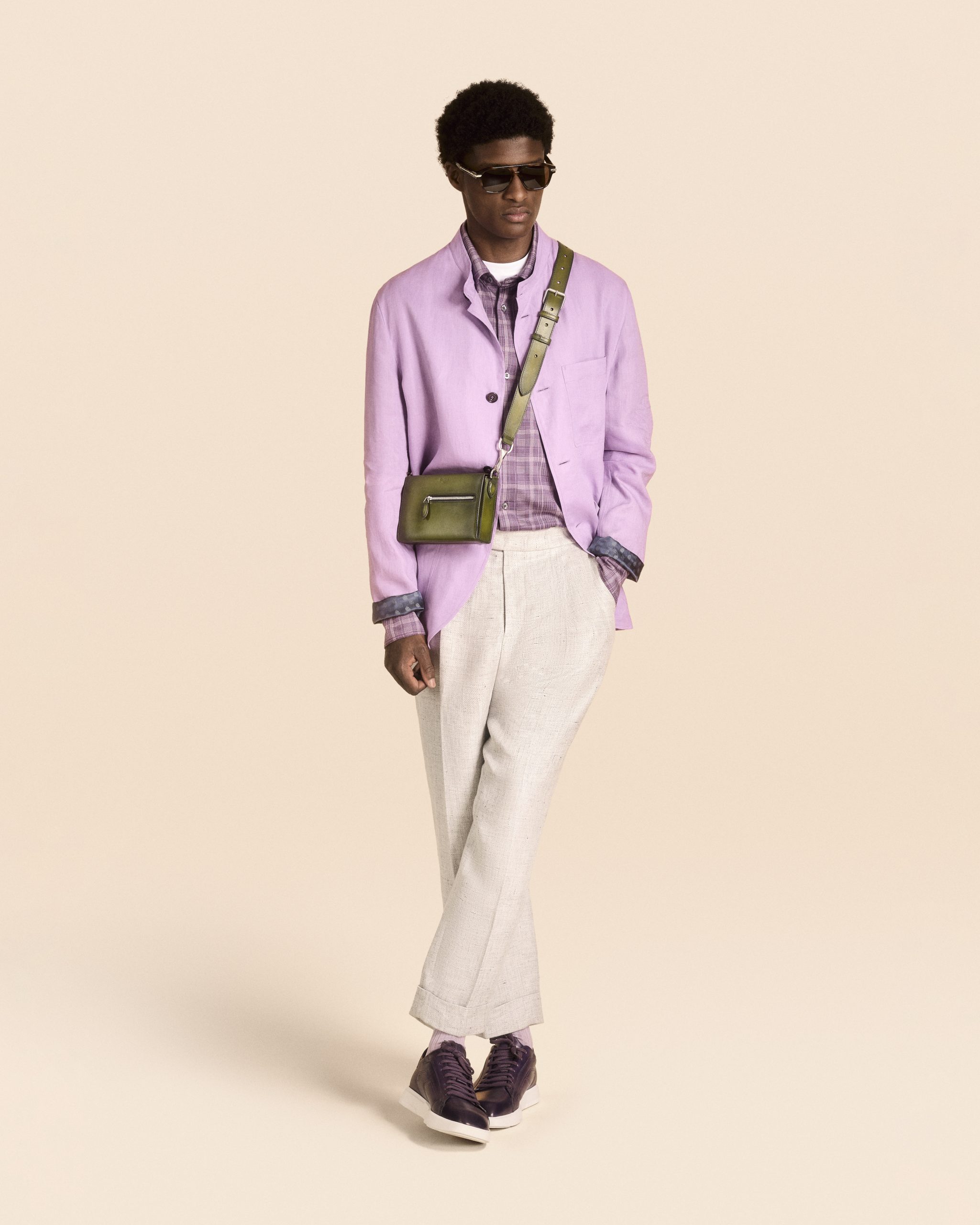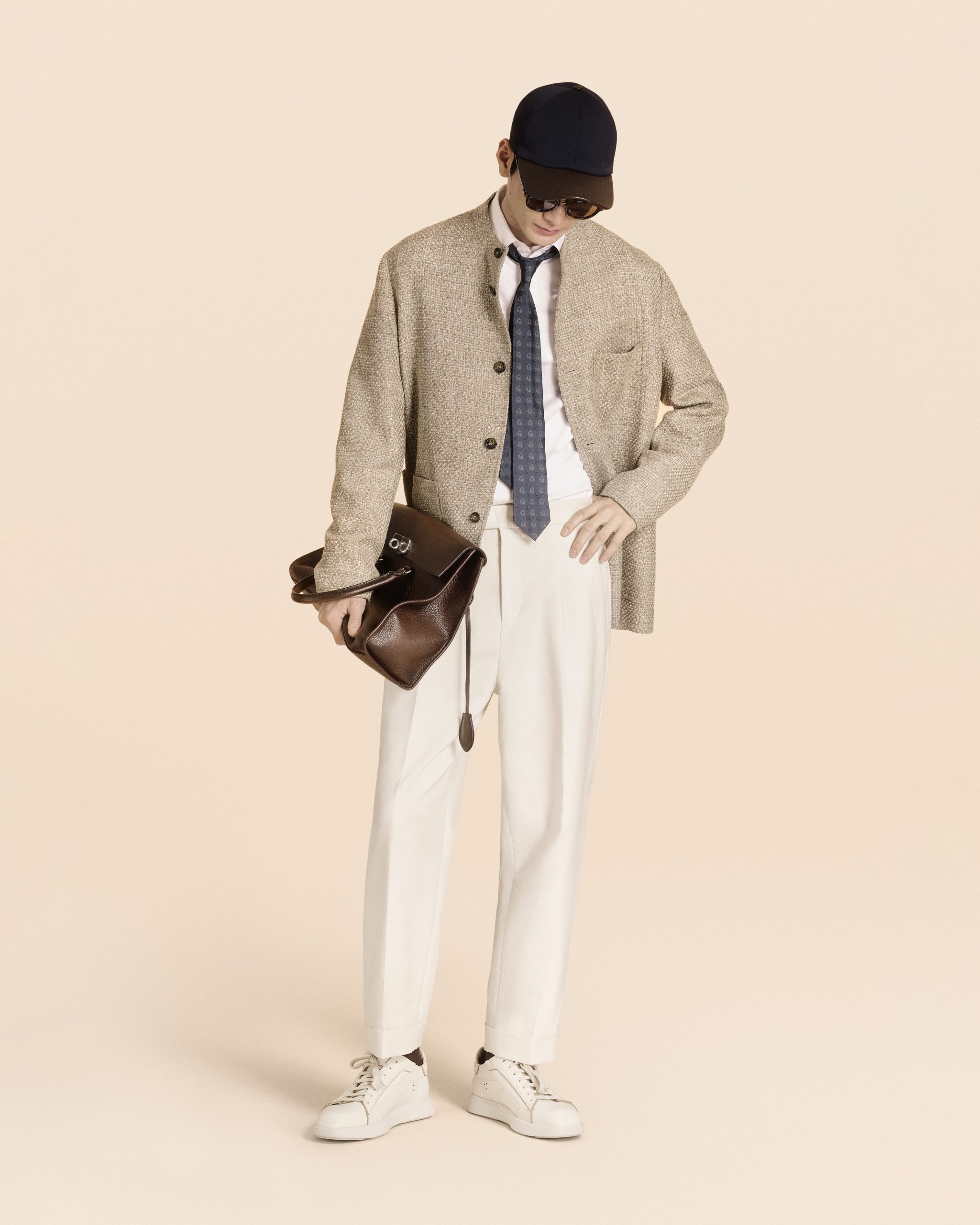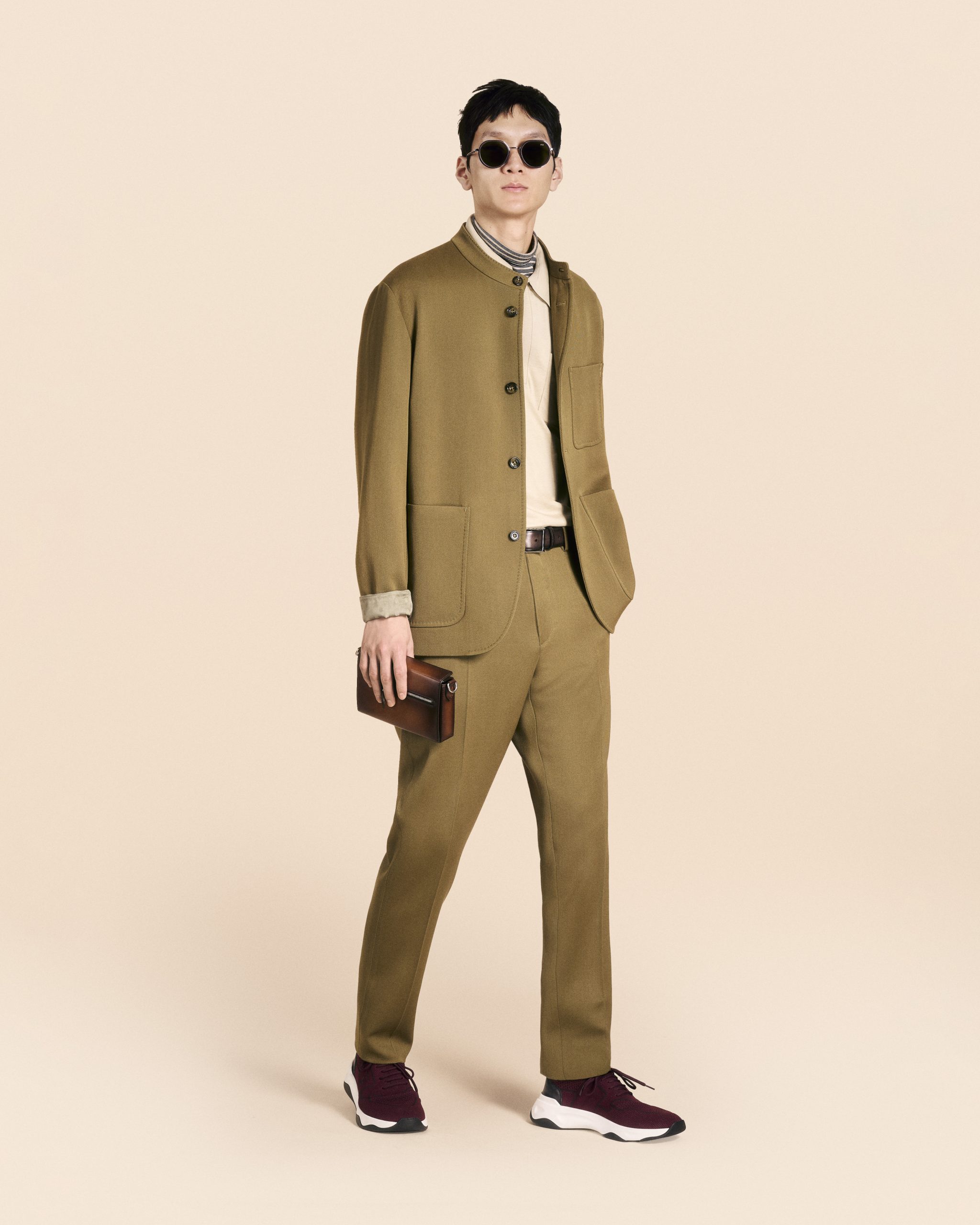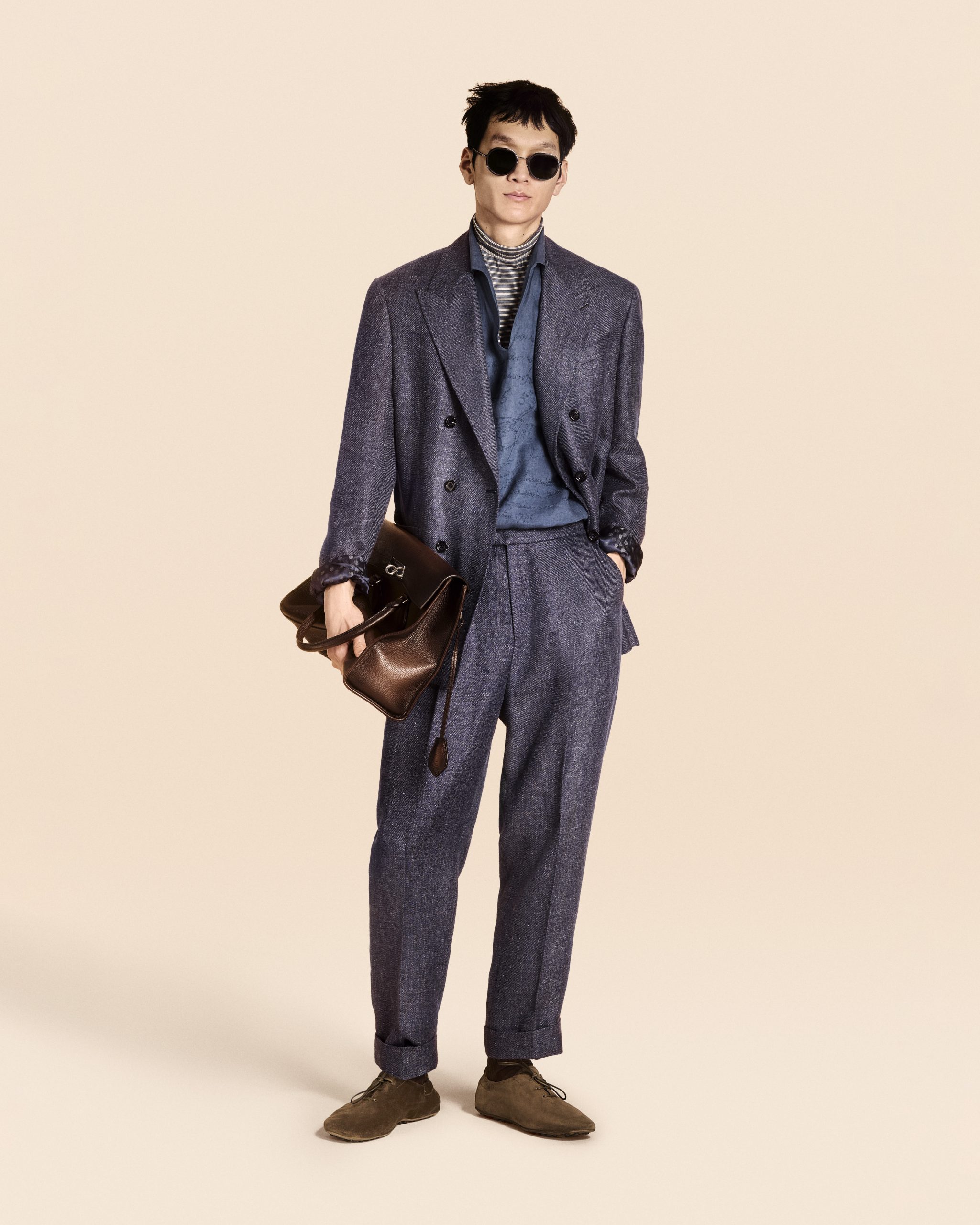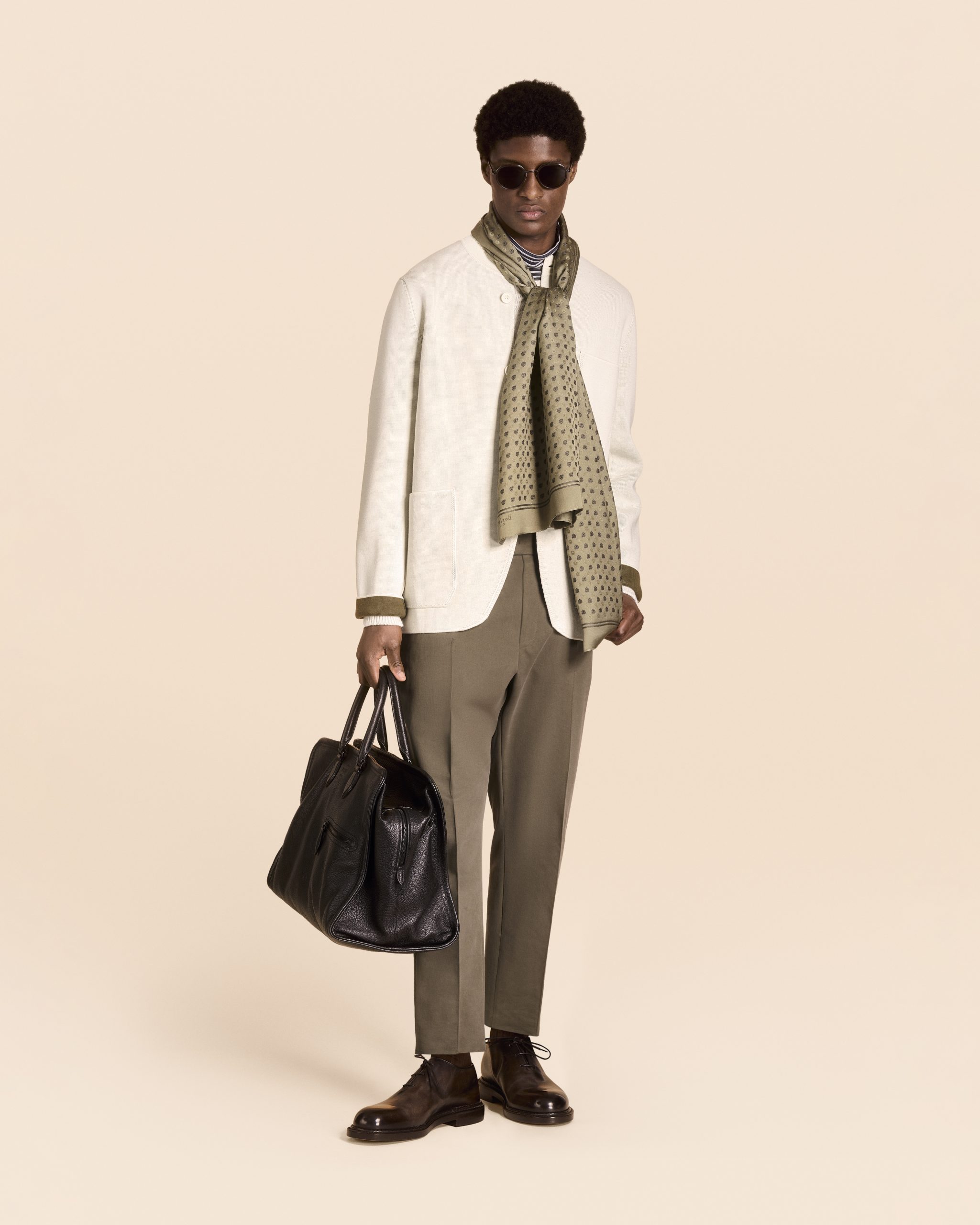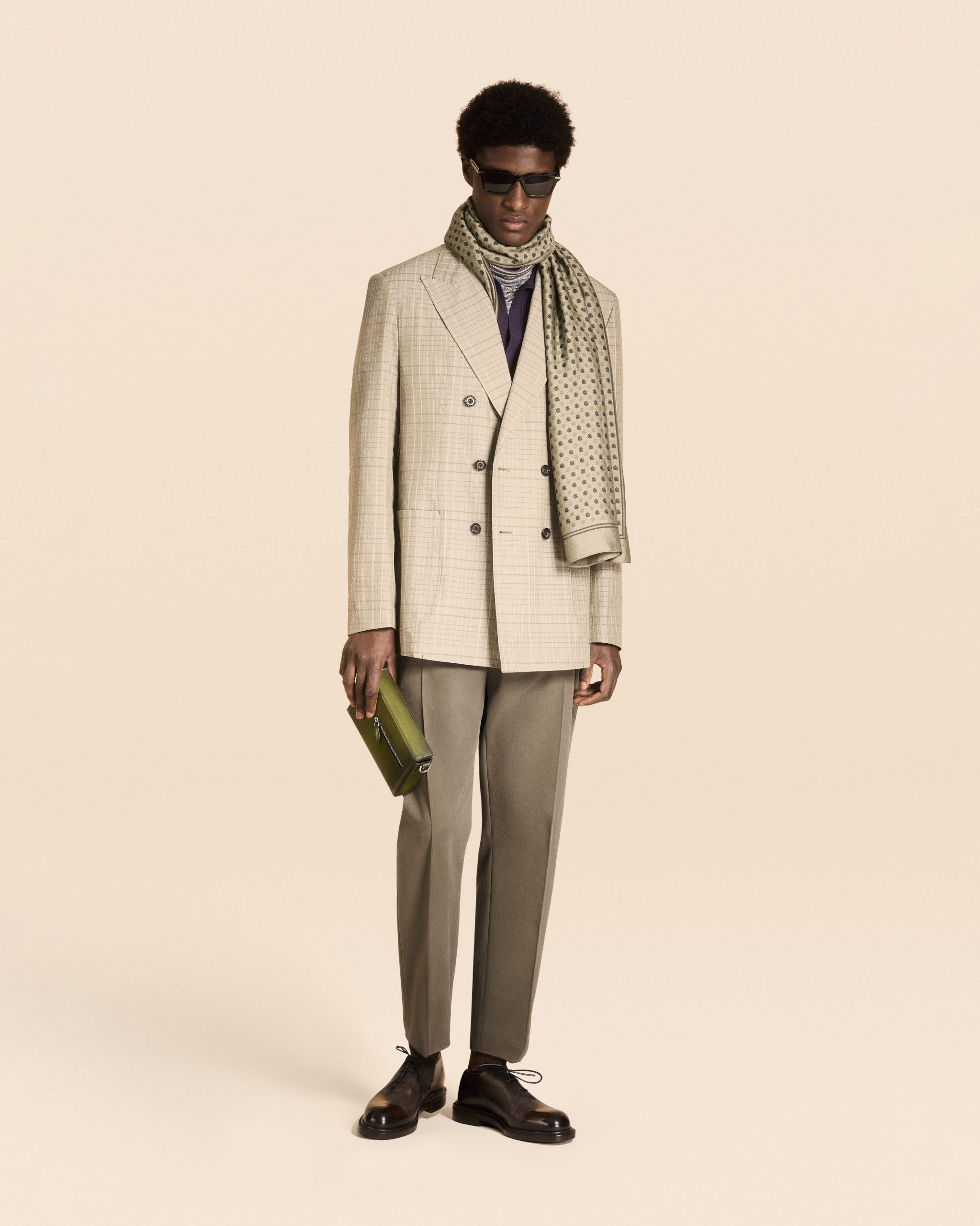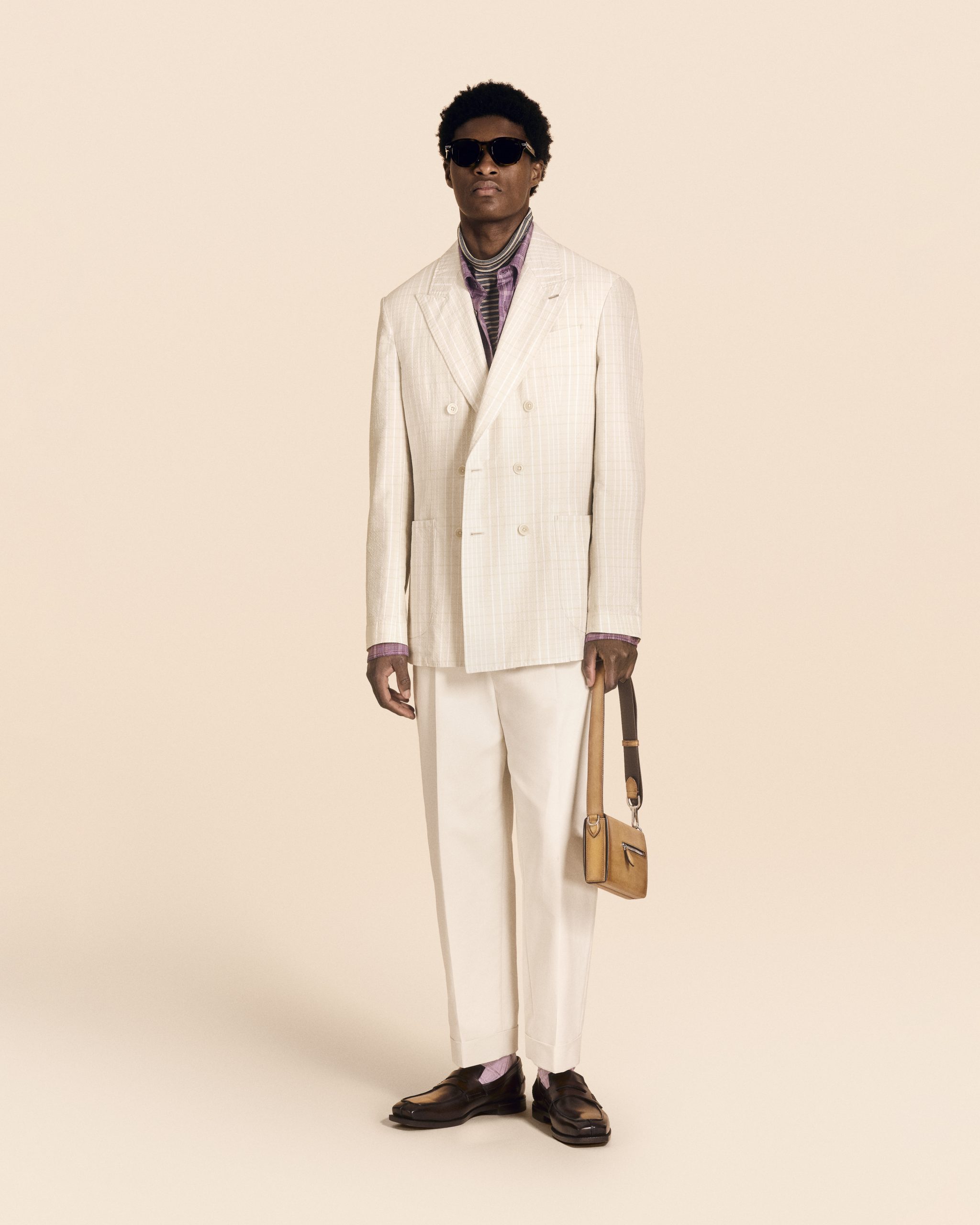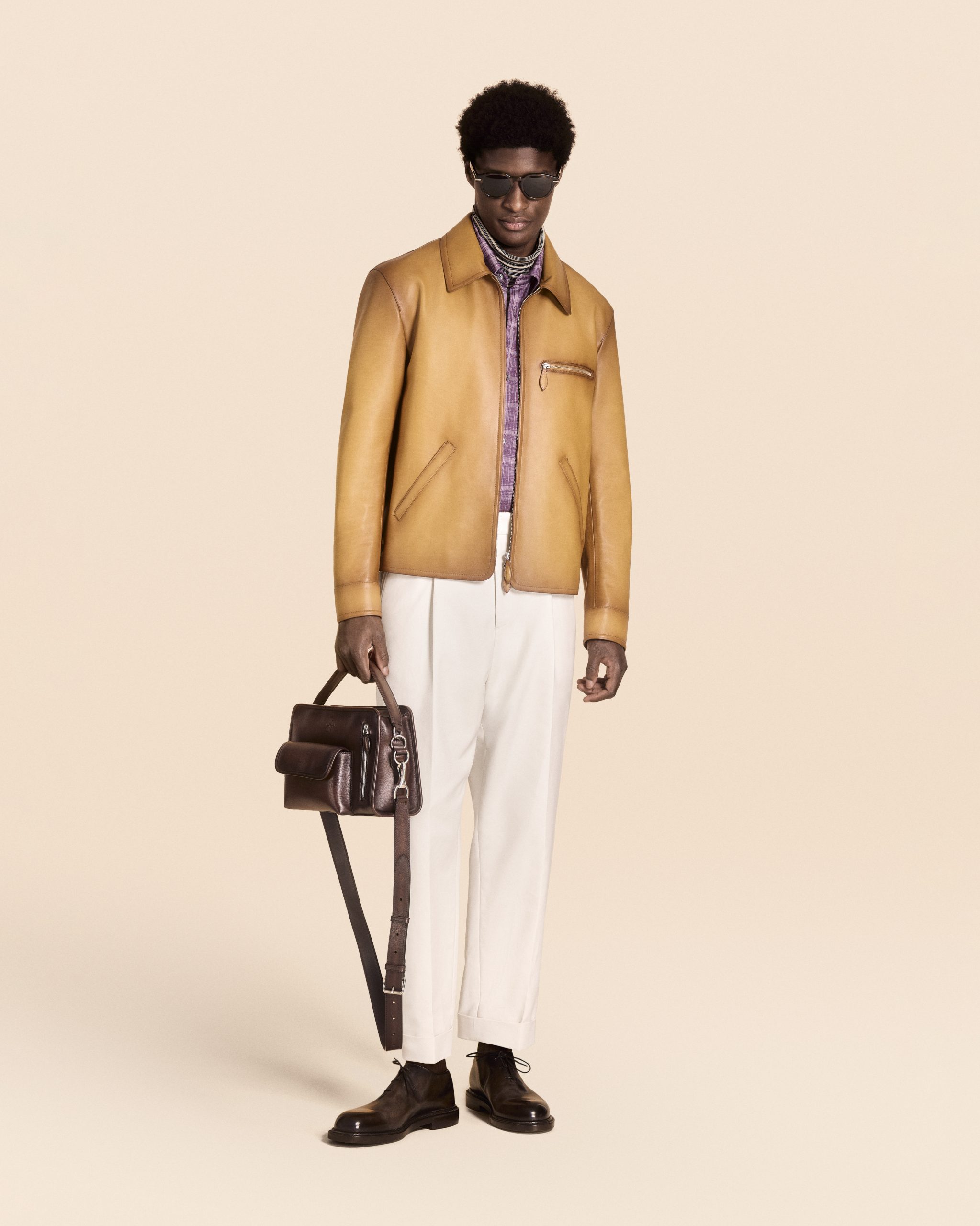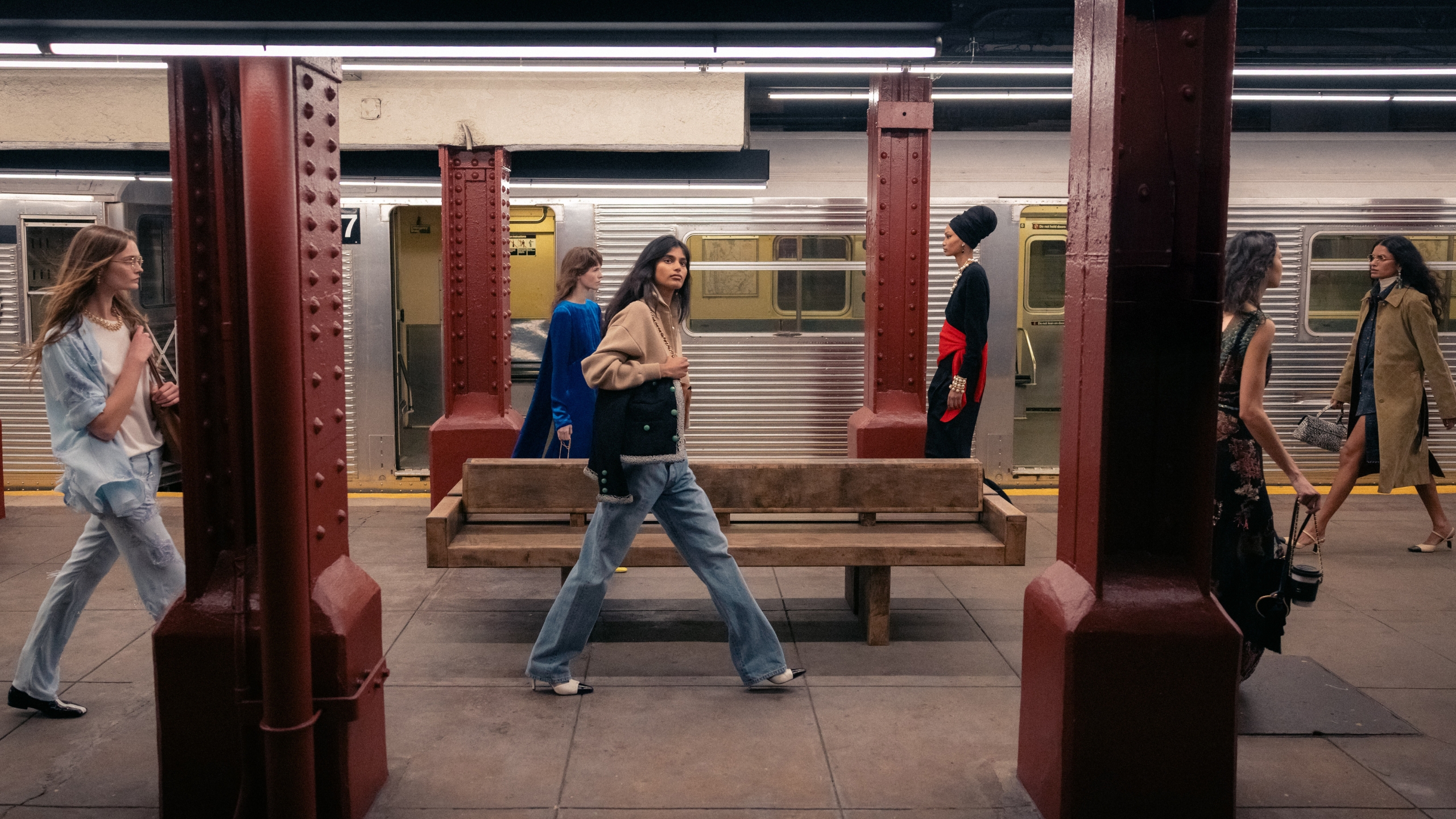Berluti once again selected the Simone & Cino Del Duca Foundation, located in Paris’s prestigious 8th arrondissement, as the setting for its latest showcase of collections and craftsmanship. More than just an elegant historic townhouse overlooking Parc Monceau, the venue draws a meaningful connection between Torello Berluti, son of Maison founder Alessandro Berluti, and Cino Del Duca.
Both were born in Italy’s Marche region and later made Paris their stage for creativity and entrepreneurship. Torello established Berluti’s first luxury shoe store in the late 1920s, while Cino Del Duca arrived in 1932 and went on to build one of France’s leading publishing empires.
Established in 1975, the Simone & Cino Del Duca Foundation was created to promote the arts, literature, and sciences both in France and on the international stage. This mission resonates deeply with Berluti’s long-standing ethos, one that, for over a century, has catered to a global clientele of discerning individuals. From artists and scientists to writers, actors, statesmen, and entrepreneurs, Berluti continues to appeal to those who appreciate exceptional style in every detail.
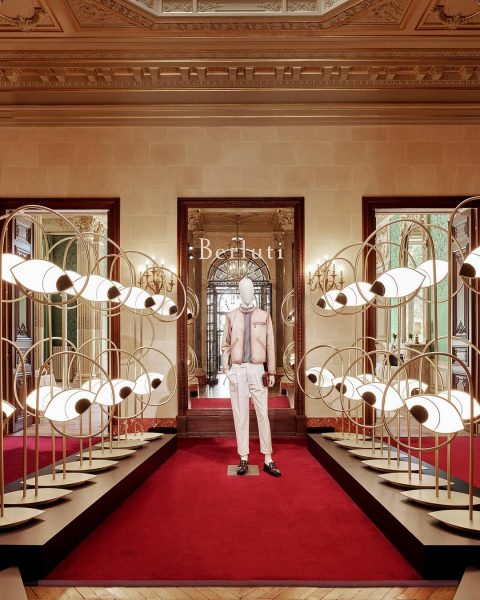
Entitled Champ-contrechamp — a cinematic term referring to the shot / reverse shot technique — Berluti’s presentation draws a parallel between filmic perspective and the Maison’s dedication to detail. Much like the nuanced dialogue in a scene, each Berluti creation, whether a shoe, bag, or jacket, reveals layers of intricacy and precision. Beyond their striking beauty lies a world of subtle craftsmanship, often visible only to the discerning eye: the true signature of enduring excellence.
Designed as an allegory of Berluti’s unique style, the three-level experience invites visitors to explore the Maison’s world, with each floor unveiling new layers of craftsmanship, creativity, and character.
The Science of the Foot

Upon entering through the grand semi-circular archway, visitors are immediately drawn to a commanding silhouette, a striking introduction that turns heads and sets the tone for what lies ahead. As they move toward the Grand Salon, a monumental foot sculpture awaits, echoing the grandeur of Michelangelo’s David and nodding to Berluti’s enduring focus on anatomical precision.
The sculpture serves as a reminder of Berluti’s century-long commitment to mastering the form and function of the foot. At Berluti, comfort and elegance are never mutually exclusive — a philosophy that feels more relevant than ever in today’s movement-driven lifestyle, where performance and refinement are expected to go hand in hand.
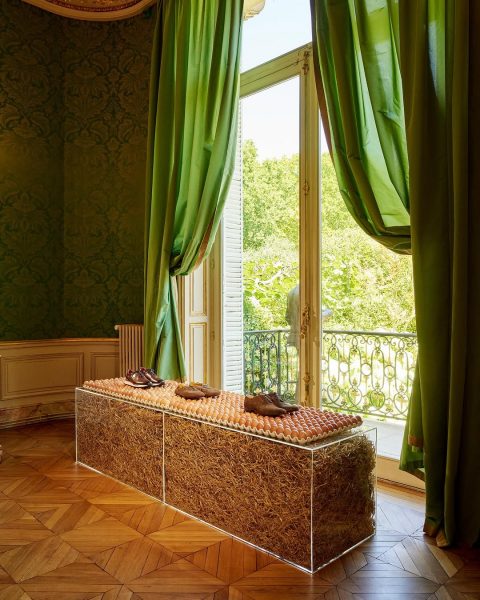
Surrounding the sculpture, sheets of precise measurements evoke the shoemaker’s craft, a testament to the expertise required to create footwear tailored to the unique architecture of each foot. With 28 bones, 27 joints, 23 muscles, and over 100 ligaments, the human foot is an anatomical marvel, and the very foundation of posture, balance, and movement.
The ability to interpret these subtle contours, whether it’s a high instep or a prominent fifth metatarsal, and craft a last that fits seamlessly, without compromise, is what sets true shoemaking artistry apart. At Berluti, this depth of understanding is not just a skill, but a signature.
The Art of the Material
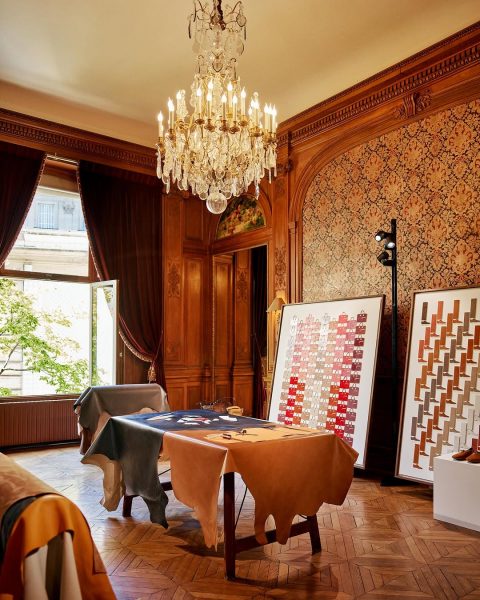
Visitors are then invited into the Cordovan Room, a space dedicated to one of Berluti’s most storied materials, one that has been closely intertwined with the Maison’s identity since its earliest days. Like his father Torello, Talbinio Berluti displayed exceptional skill in leatherworking from a young age, particularly in the art of cutting — a legacy that continues today through the hands of artisans at the Berluti Manifattura in Ferrara, Italy.
At the heart of the room, a beautifully laid Cordovan hide stretches across a worktable — a quiet tribute to the expertise required in selecting, evaluating, and cutting leather with absolute precision.
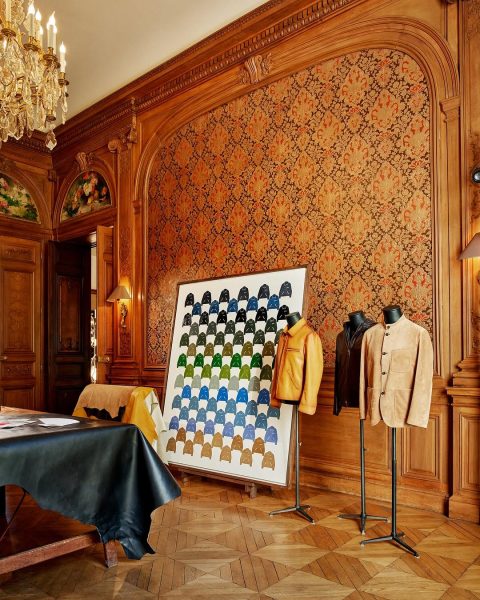
Each leather at Berluti serves a purpose: Venezia for patina-rich shoes, Saddle Soft for supple jackets, and suede for the Maison’s iconic Forestière. The room pays homage to shoemaking’s deep roots — in ancient Rome, cobblers were part of the fifth citizens’ guild, a mark of their respected status.
The term “cordwainer”, dating back to 11th-century Europe, described artisans who worked with Cordovan leather — crafting shoes so well made, they were often passed down for generations.
The Unmistakable Scritto
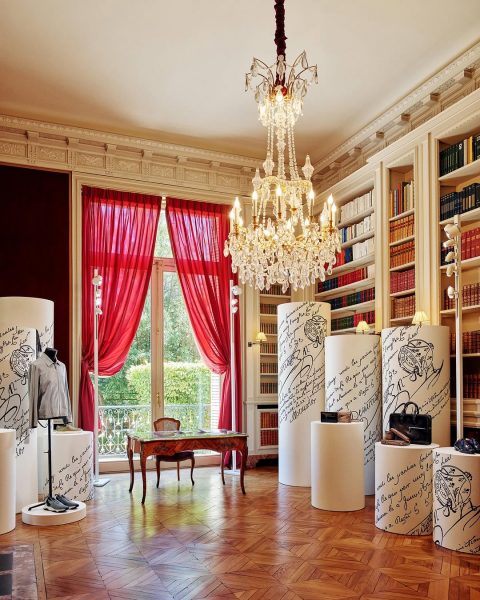
A library offers the perfect setting to (re)discover Scritto leather, one of Berluti’s most iconic signatures. Inspired by an 18th-century handwritten deed from 1771, its calligraphic script is etched by laser onto the leather’s surface grain: a poetic detail that brings character to everything from Oxford lace-ups to cigar cases, polo shirts, and overcoats.
The City Bag

Immersed in the codes of Berluti’s DNA, visitors are guided upward by a shaft of light to the first floor, where the Salon Vigny unfolds like a curated box of colour and texture. The space celebrates Jour de Poche: a compact, hands-free essential that merges convenience with style. Introduced as part of Berluti’s leather goods journey, which began in 2005 with a briefcase and evolved into icons like the Deux Jours travel bag, the Jour de Poche reflects the same spirit of innovation.
Rooted in Berluti’s design trinity of function, aesthetics, and purpose, the piece offers versatility in format, leather, and wear. Crafted in Venezia leather with distinctive features, an off-centre zipped pocket and leaf-shaped zipper pull, it echoes both a Japanese inrō and an overnight bag. Sized like a paperback and offered in rich hues like cognac, mimosa, grass green, and Dark Cherry, this elegant companion is made to go wherever you do.
“Ceci n’est pas une charentaise” (“This is not a slipper”)
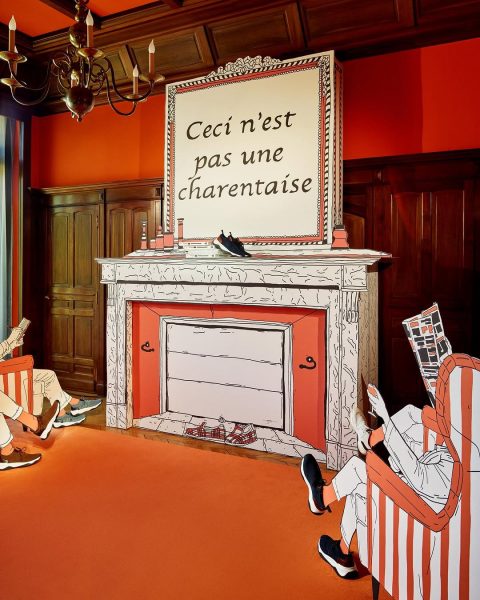
Just steps away lies the Salon Orange, home to the Shadow, Berluti’s featherlight sneaker weighing just 450 grams, roughly the weight of two apples. While René Magritte’s “Ceci n’est pas une pomme” (“This is not an apple”) couldn’t be brought from LACMA, Berluti channels his wit with a playful nod: “Ceci n’est pas une charentaise” (“This is not a slipper”).
The message is displayed alongside designs that attest to continuous technological improvements. One such advance is a mesh, knitted with cooling engineered fibres, essential for hot-weather wear. A consummate fusion of inventive design and technical innovation, the Shadow sneaker (which you put on like a slip-on) combines the classic shoemaker aesthetic of a lace-up upper and three sets of eyelets with the comfort of a flexible, high performance sole in shock-absorbing memory foam.
Remarkable Style
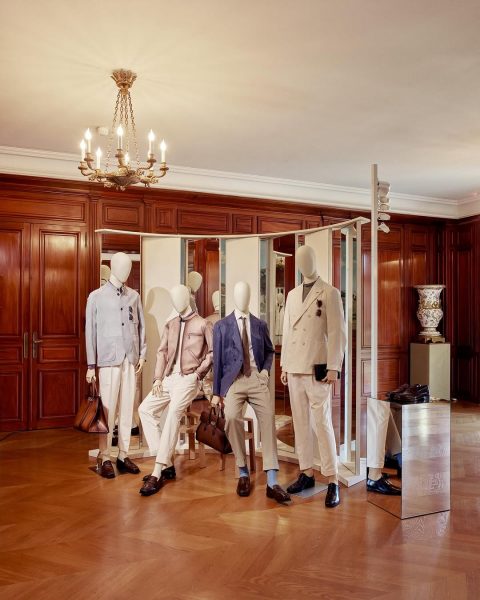

On the second floor of the townhouse, with sweeping views over Parc Monceau, visitors are invited to immerse themselves in the full expression of the Berluti aesthetic. This head-to-toe approach blends timeless tailoring with modern versatility, effortlessly styled with either formal lace-ups or refined sneakers, depending on the mood.
At the heart of the collection is the iconic Forestière jacket, reimagined in standout shades like midnight blue, lilac linen with an aloe vera finish, or lime-green serge wool. Other highlights include a modern interpretation of summer tweed — woven from an exquisite mix of cashmere, wool, cotton, silk, and linen — a fabric as distinctive as the Maison itself.
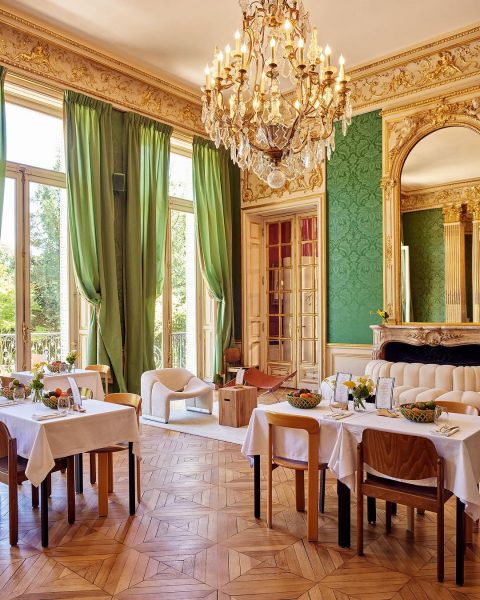
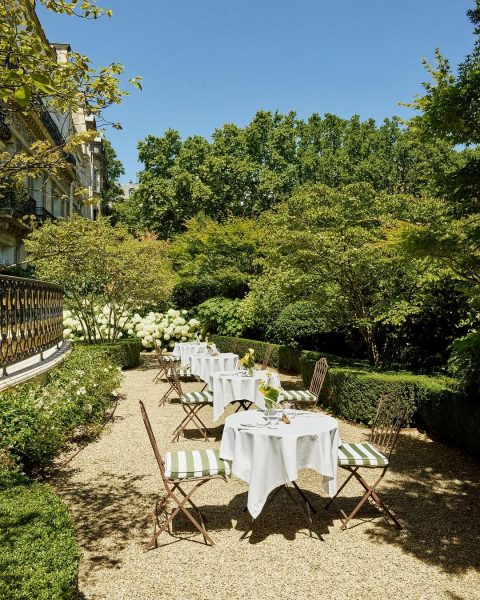
To reflect, write, or simply take it all in, guests can choose between the quiet elegance of the Grand Salon or the open-air charm of the terrace, where a drink in hand is best enjoyed with serene views over the garden.
Click here to discover more from Berluti.
View this post on Instagram
BERLUTI BERLUTI SUMMER 2026
